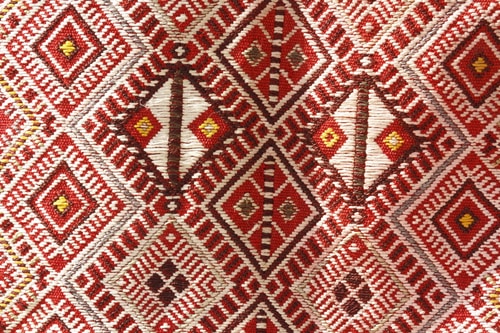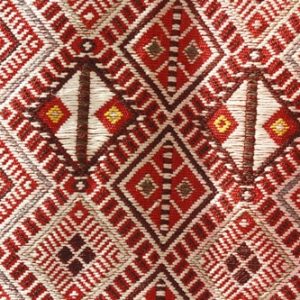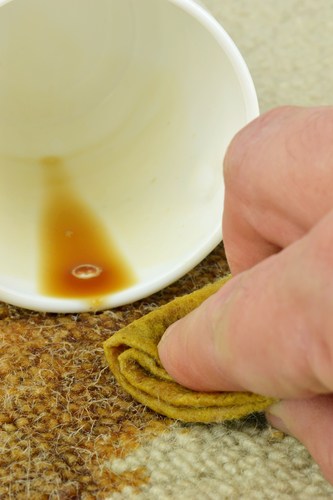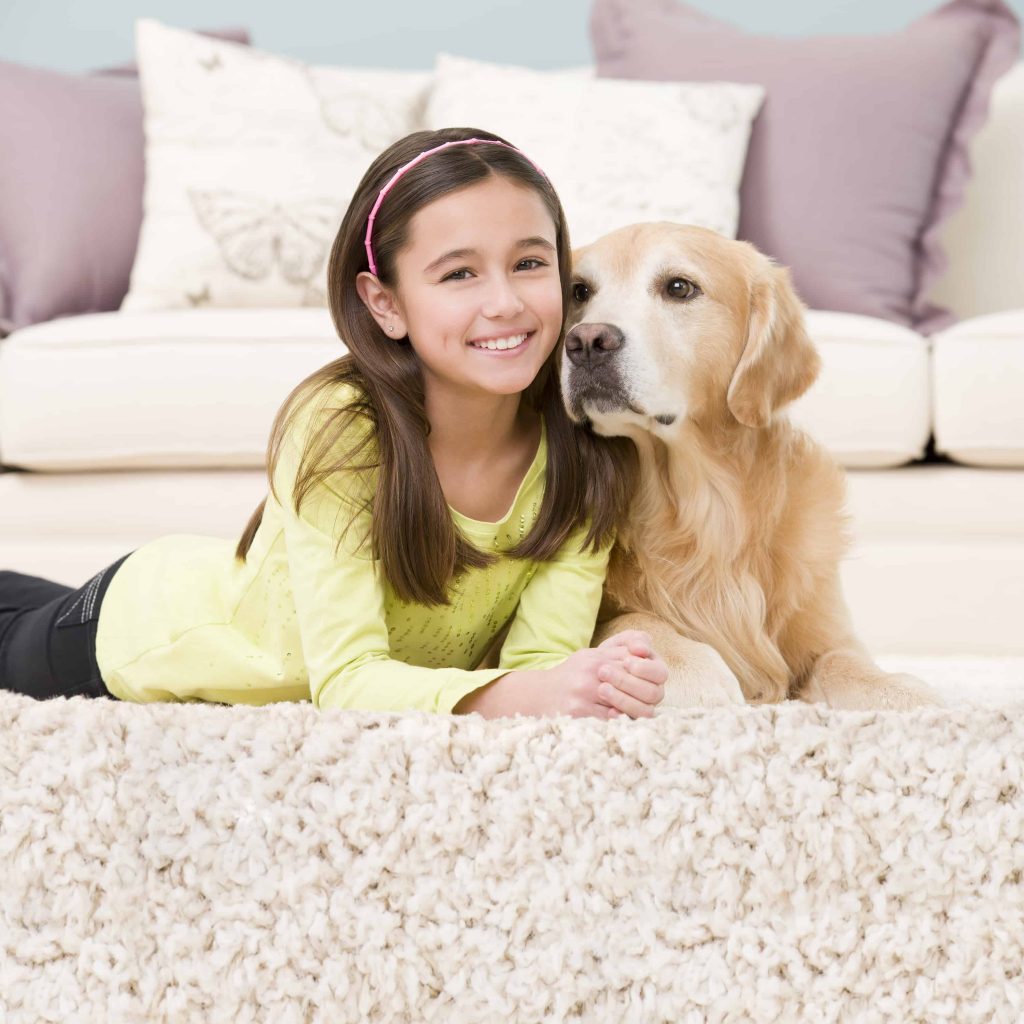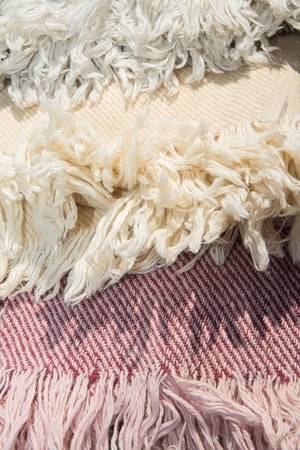A selected number of older American hand-hooked rugs and some more contemporary European latch look and needlepoint rugs were woven on jute foundation, a plant fiber that has now become the plentiful (and inexpensive) fiber of choice for many rugs from the world’s number one jute grower, India, among other countries. If you happen to walk into any of the most renowned stores with home furnishing, you will definitely come across rugs with just as the backing material (most commonly) or face fibers, mainly because it is a cheap, eco-friendly (biodegradable) material that grows fast. However, jute is a very delicate fiber to handle if you haven’t studied your lesson well. Should anything comes up, it would be tough to correct if you have not taken precaution beforehand.
The three major challenges you will face as a jute rug owner as followed:
1. Jute Yellows and Browns
All rugs brown and yellow over time. With jute, though, things can get beyond control. If you have a rug with jute backing, always make sure it stays dry all the time. Even a little too wet will get the rug nasty brown and yellow shades. Why? Because at that time, it releases oils that turn the carpet brown. Image the nightmare if you have to wash it to get it cleaned. What can you do to clean a cotton or rayon rug with some jute threads, given that it will turn yellow the minute it gets wet? This is, indeed, a serious puzzle for every rug cleaner (and owner, of course).
2. Jute is Super Absorbent
Jute holds odor like crazy. This means that the odor from pet urine on a jute rug will be intensified by zillion times (here is how to remove pet odor from rugs, other than those with jute fuondation). Now, the question is: How do you know if your rug has jute fibers? Well, unfortunately, in many cases you can’t know. See, you may find the perfect rug whose label says it is 100% polypropylene. Chances are the weft threads are jute fibers. Why? Because labels only list the rug’s face fibers (most of the times, at least). So a hand-woven rug’s label will say “100% wool” but rest assured, then wefts and warps are most likely cotton. The same applies to synthetic rugs that carry a “100% polypropylene” label (or polyester, nylon, acrylic) but have jute fibers in their foundation. The only solution is to trust the seller.
Like previously mentioned, removing odors (say, from pet urine) from these rugs is extremely challenging as they will turn yellow or brown once they get a treat from your pet. Also, eliminating the source of the problem is tough because the innermost fibers absorb whatever has been spilled on the rug.
Prefer a jute rug is you want a cheap option on the floor until your pet is properly trained.
3. Jute Gets Brittle and Dry Rots Faster than Any Other Fiber
Over time, rugs that have been woven on jute disintegrate, causing the woven textiles to fall apart (i.e. unraveling edges, splits and cracks along the edges where it is folded). Spills also accelerate the rotting process. Sadly, when the jute has become brittle with either age or rot, there is no turning back, no salvation on the list. Considering that the jute comprises the foundation of the carpet, any damage to it would be like having your skeleton crumbling apart. With no strength left in it, how can the rug stay in one piece? It is a pity, though, because some textiles are charming.
This means that unless you treat the rug’s deterioration before the cleaning process, you can definitely expect it to fall completely apart without further notice.
How to Treat the Issues
1. Yellowing/Browning
If the rug doesn’t have a serious browning problem yet (only signs of cellulose browning), you can surface clean it with an upholstery tool, always making sure the backing doesn’t get too wet (better not expose the jute backing to any moisture or at least try to keep it down as much as possible). This should give you the feel that you have actually cleaned the rug. However, there are other choices, too, mostly suitable for rugs that have moderate soiling and severe browning problems. Two of the most conventional cleaning techniques in these cases use a low-moisture bonnet (encapsulation cleaning) or dry compound, which are both delivered by professional rug cleaners and are the only viable options for heavy cases.
Now, if you wash a rug with jute completely, then you can lessen cellulose browning by having an acid rinse or dry the carpet face down (and flat) on a perfectly clean surface. Then, run some air movers (the highest speed available) on to dry. This could potentially move the browning issue move to the back side of the carpet, where it would be untraceable!
2. Odor Removal
Pet urine is a VERY difficult stain to remove in the first place, no matter the type of rug, and very dangerous to let it sit for a while (here is what pet urine can do to your rug). You know your rug is polypropylene with a jute foundation if the odor is way too strong. This opens the way to the use of oxidizers (there are some new ones on the market that can effectively remove odor), such as Oxcelerate and OSR. Note that you should NEVER attempt to use those on wool rugs and ALWAYS test first before you do anything else.
3. Brittle Fibers
This one is tough. Once t he crumbling and splitting of the foundation fibers begins, there is not much you can do to reverse things. Whenever the foundation wefts rot, there is no strength in that area (where deterioration has occurred) to hold the rug together. So, it is time to start thinking of alternative ways to use these rugs. For example, you can hang them (especially the smaller decorative needlepoint and hooked rugs) to protect them from foot traffic that will eventually tear them apart. If there is still enough strength left to the rug (it will have to support its weight while hanging on the wall), allow it to be hung.
If you are interested in finding out more tips and insider’s advice about synthetic rugs or how often you should clean your area rugs, feel free to check the relevant articles!

